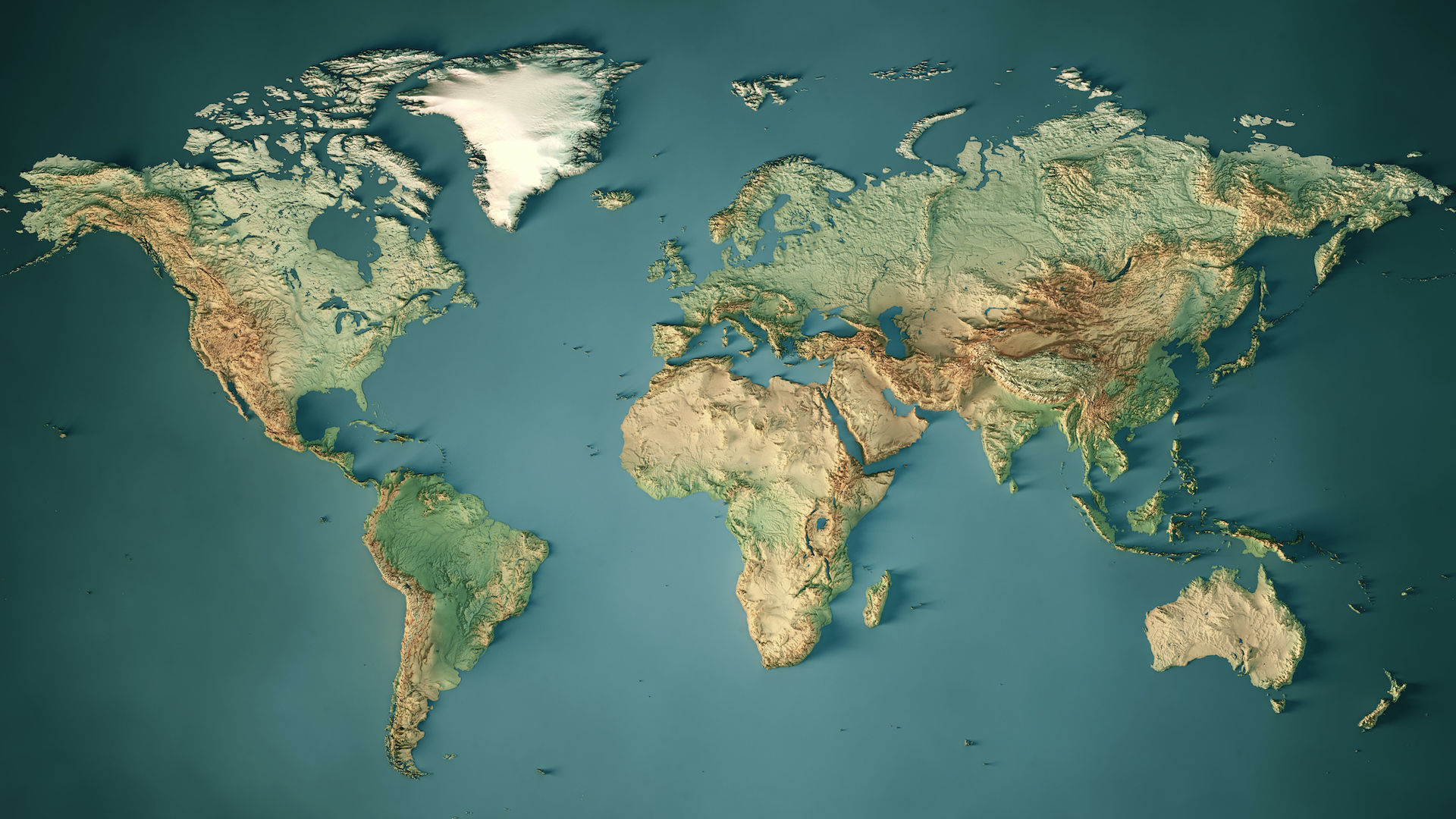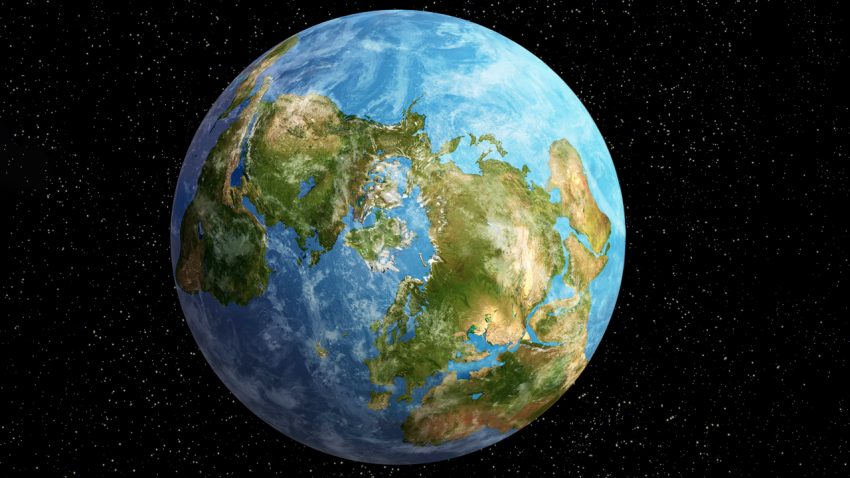Deep within the annals of Earth’s history lies a captivating tale of Pangaea, the ancient supercontinent that once united the vast landmasses we know today. Pangaea, meaning “all lands” in Greek, existed over 300 million years ago, during the Paleozoic and Mesozoic eras. This colossal landmass was a result of tectonic forces, weaving together the continents we recognize today. But beyond the geological marvel, Pangaea has also woven itself into the tapestry of human imagination, inspiring myths, legends, and sparking the curiosity of both scientists and storytellers alike.
Facts About Pangaea, Ancient Supercontinent
 In the realm of mythology, Pangaea holds a prominent place. Ancient civilizations sought to explain the origins of the world, often turning to mythical stories to satisfy their quest for understanding. One such tale is the legend of Gondwana, a supercontinent that predates Pangaea. According to African mythology, Gondwana was the land where all life began. It was a place of abundance, teeming with exotic creatures and lush vegetation. As the continents drifted apart, the story goes, Gondwana shattered into fragments, birthing the diverse ecosystems we witness today.
In the realm of mythology, Pangaea holds a prominent place. Ancient civilizations sought to explain the origins of the world, often turning to mythical stories to satisfy their quest for understanding. One such tale is the legend of Gondwana, a supercontinent that predates Pangaea. According to African mythology, Gondwana was the land where all life began. It was a place of abundance, teeming with exotic creatures and lush vegetation. As the continents drifted apart, the story goes, Gondwana shattered into fragments, birthing the diverse ecosystems we witness today.
In the realm of science, the concept of Pangaea emerged in the early 20th century, thanks to the pioneering work of German meteorologist and geophysicist Alfred Wegener. Wegener proposed the theory of continental drift, suggesting that the continents were once connected and had gradually drifted apart over millions of years. His theory challenged the prevailing belief that the continents were fixed in place, igniting a revolution in the field of geology.
The notion of Pangaea fascinated scientists, as they began to piece together the puzzle of Earth’s ancient past. Through the study of geological formations, fossil records, and the matching shapes of coastlines, researchers began to reconstruct the majestic supercontinent that once ruled the planet. They discovered that Pangaea was a vast landmass, stretching from pole to pole, with a central “spine” known as the Appalachian Mountains.
The breakup of Pangaea had profound implications for Earth’s geological and biological evolution. It led to the formation of the modern continents, the birth of new oceans, and the diversification of life forms. As the continents drifted apart, unique ecosystems developed in isolation, giving rise to the rich biodiversity we witness today.
 Yet, the allure of Pangaea extends beyond scientific inquiry. It has inspired artists, writers, and filmmakers, who have woven its mystique into their creations. From J.R.R. Tolkien’s Middle-earth to the fictional continents of Atlantis and Lemuria, the echoes of Pangaea can be heard in the realms of fantasy and imagination.
Yet, the allure of Pangaea extends beyond scientific inquiry. It has inspired artists, writers, and filmmakers, who have woven its mystique into their creations. From J.R.R. Tolkien’s Middle-earth to the fictional continents of Atlantis and Lemuria, the echoes of Pangaea can be heard in the realms of fantasy and imagination.
The concept of Pangaea also invites us to ponder the interconnectedness of our world. It serves as a reminder that despite the apparent separateness of our continents, we are all part of a shared history and a shared planet. Pangaea reminds us of the vastness and interconnectedness of Earth’s ecosystems, calling for greater awareness and stewardship of our natural world.
In the grand tapestry of human history, Pangaea stands as a symbol of both unity and diversity. It beckons us to explore the mysteries of our planet’s past and to marvel at the wonders that lie beneath the surface. It reminds us that even in the ancient epochs of our planet’s history, myths and legends were born, capturing the imaginations of countless generations.
As we delve into the fascinating world of Pangaea, we not only uncover the geological forces that shaped our planet but also immerse ourselves in the captivating realm of myths and legends. The story of Pangaea is a testament to the enduring power of curiosity, imagination, and the relentless pursuit of knowledge.
Throughout history, Pangaea has captivated the minds of scholars, explorers, and ordinary individuals alike. It serves as a window into the Earth’s deep past, offering glimpses of a time when the continents were interconnected and the world looked vastly different. The study of Pangaea not only deepens our understanding of geological processes but also fuels our sense of wonder and ignites our imagination.
As we explore the ancient supercontinent, we uncover the remnants of a bygone era. Fossilized plants and animals provide us with valuable insights into the diverse and extraordinary life forms that once inhabited Pangaea. From towering dinosaurs to ancient ferns, these fossilized remnants offer a vivid snapshot of a world that existed millions of years ago. The discovery of fossils in different parts of the world helps scientists piece together the puzzle of Pangaea’s ancient ecosystems and the evolutionary pathways that led to the species we know today.
But beyond the scientific realm, Pangaea has also permeated cultural narratives and given rise to a myriad of legends and myths. In various ancient civilizations, tales have been passed down through generations, recounting the awe-inspiring stories of the supercontinent’s formation and subsequent breakup. These myths often attribute the separation of the continents to cataclysmic events or the actions of powerful deities, adding a touch of mysticism to the already captivating narrative.

